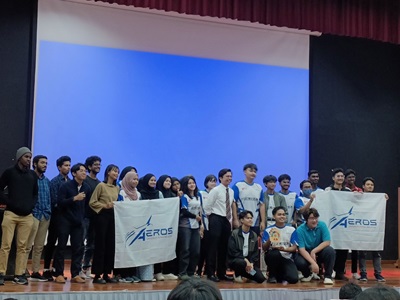Date: 1st December 2022
By: Mohamad Rezi Abdul Hamid and Dayang Radiah Awang Biak
Group brainstorming is a common approach used to generate ideas. If executed properly, this exercise can promote creativity, generate team dynamics, or land on excellent and practical solutions. A productive brainstorming session will create a team that is inspired, energized and excited to continue to the next step. Unfortunately, not all brainstorming sessions are successful. There are sessions where good ideas are lost and passionate people become uninspired due to pressure, ego, poor environment, loss of team spirit and etc. Every one of us might be in a situation where we bite our tongue and failed miserably to generate out-of-the-box thinking during a meeting. Don’t worry, why don’t we try this new approach. Who knows, it might work for you!

We had a chance to join a one-day workshop on Creativity, Innovation, and Transformation organized by the UPM Registrar Office. Various topics were discussed, but the one that sparked our interest was the random input method for brainstorming.
What is random input method and how does it work?
On the first glance, random input method is somewhat absurd. Our initial thought was how spouting random stuff would help us to come up with brilliant ideas to solve a specific practical problem? After going through the process, we seem to get the grasp on how random input approach can be used to generate ideas. Random input entails using random word, pictures, or sound, to open new lines of thinking. The idea is not used directly to solve the problem but to assist the mind to a new direction of thinking. Traffic congestion issues in Kuala Lumpur especially during the rush hours is an example of a well-defined problem. How do we go about using random input to initiate our thinking direction?
- Select a random item (e.g., balloon) – Creativity Tools Random Word Generator can help you to start
- How do we expand from the word ‘balloon’? List down any words, characteristic, images, or sound related to the selected word (e.g., circle, light, flexible, and etc.). You can use mind mapping approach to link them
- Associate the listed words with the problems to be solved and continue to ask questions
From this activity, several potential ideas generated are:
- Built more roundabout (circle) in Kuala Lumpur area
- Allow only light vehicle to use the road during rush hours
- Allow flexible working hours
When using random input, resist the temptation to think that the random word has nothing to do with your problem thereby should be eliminated. Random associations may take you to places you had never imagined. Note that these ideas are very crude. Some may be impractical or even downright wrong but one key learning point that we took from the workshop is to critique an idea during brainstorming session is a big no. Give it a try and all the best!
References
Mullen, B., Johnson, C. and Salas, E. (1991) “Productivity loss in brainstorming groups: A meta-analytic integration,” Basic and Applied Social Psychology, 12(1), pp. 3–23.
Tarikh Input: 29/11/2022 | Kemaskini: 29/11/2022 | ahmadadib
PERKONGSIAN MEDIA




































